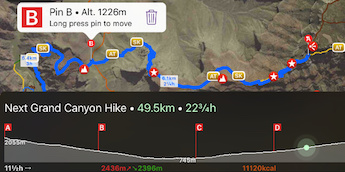Tiger Mountain State Forest
191 Trails
106 POIs
9 Peaks
11 Picnic Sites
3 Viewpoints
Description
Tiger Mountain is a mountain in the U.S. state of Washington. The mountain has six peaks in the center of the Issaquah Alps, forming a 13,500-acre (55 km2) triangle between Interstate 90 (I-90) on the north, Issaquah-Hobart Road on the southwest, and State Route 18 (SR 18) on the southeast. Immediately to the west is Squak Mountain followed by Cougar Mountain, to the southeast are Mc Donald and Taylor Mountains, and Rattlesnake Ridge. Tiger Mountain State Forest was established in 1981. In 1989, the entire Issaquah Plateau in the northwest corner was designated as a conservation area, the West Tiger Mountain Natural Resources Conservation Area, accessed by a large trailhead at Exit 20 on I-90. The most crowded trail leads to the bald summit of West Tiger #3, with a panoramic view of Seattle and points to the south and east. It is a 6.2-mile (10.0 km) hike, round-trip, with an elevation change of about 2,000 feet (610 m). The nearby peaks of West Tiger #2 and West Tiger #1 provide essentially the same view, but with fewer obstructions. Poo Poo Point, a bare shoulder of West Tiger Mountain, is a bare ridge on the west side of Tiger Mountain. The point is named for the sound the steam whistles would make when signaling loggers. The point is a popular launching point for paragliding and hang gliding. The point is reached by the Chirico Trail, which starts at the landing zone for the hang gliders and paragliders in a field adjacent to the Issaquah-Hobart Road, or by taking the High School Trail which begins on 2nd Avenue just south of Issaquah High School. Many people fly year-round (weather permitting) and have flown cross-country flights exceeding 75 miles (121 km).
Trails in the Hikepack map
- 15 Mile Railroad Grade
- 7000 Road
- Adventure Trail
- Around the Lake Trail
- Auburn-Echo Lake Cutoff
- Bail Out (PBR)
- Benneville Powerline Trail
- Boot Trail
- Bootleg Trail
- Brew Road
- Brink Trail
- Bus Trail
- Bypass Trail
- Cable Line Trail
- Carey Creek Trail
- Chirico Trail
- Coal Mine Loop Trail
- Connector Trail
- Donkey Engine Trail
- Dwight's Way Trail
- East Tiger Mountain Trail
- East Tiger Summit Trail
- Easy Tiger
- Elk Ridge Trail
- Fully Rigid
- Grand Canyon Trail
- Grand Ridge Trail; Grand Ridge - East
- Grand Ridge West
- Hermit
- Hidden Forest Trail
- High Point Trail
- High School Trail
- Holder Knob Trail
- Holder Ridge Trail
- I 90 Trail
- Issaquah Highlands Connector
- Issaquah Hobart Road Southeast
- Issaquah to Preston Trail
- Issaquah-High Point Trail
- Iverson Railroad Trail
- Joyride
- K-3 Trail
- Knee Knocker
- Lingering Trail
- Lower Predator
- Main Tiger Mountain Road
- Maintenance Access Trail
- Master Link
- Mt. Beaver Trail
- Nook Trail
- Northwest Timber Trail
- Off-The-Grid (OTG)
- One View Trail
- Poo Poo Point Trail
- Poo Top Trail
- Poo-Poo Point Trail
- Preston Powerline Trail
- Preston Railroad Grade
- Preston Trail
- Preston-Snoqualmie Trail
- Puget Power Road
- Quick Link
- Road 1500
- Road A
- Road F
- Road G
- Road H
- Road I
- Road K
- Ruth Kees Big Tree Trail
- Seattle View Trail
- Section Line Connector
- Section Line Trail
- Sherwood Trail
- Silent Swamp
- South Tiger Mountain Traverse Trail
- Southeast 188th Street
- Southeast 79th Street
- Southeast 80th Street
- Southeast High Point Way
- Swamp Trail
- Talus Rock Trail
- Talus Rocks Trail
- The Legend
- Tiger Mountain Trail
- Tradition Lake Connector Trail
- Tradition Lake Trail
- Trillium Bridge
- Upper Predator
- Webster Creek Road
- West Side Road
- West Tiger #2 Trail
- West Tiger 1 Trail
- West Tiger 3 Trail
- West Tiger 3 trail
- West Tiger RR Grade
- West Tiger RailRoad Grade
- Wetlands Trail
- Whiskey Still Trail
Attractions in the Hikepack map
- Brew Hill
- Bus Trail
- Cascade Parking Lot & ER Parking
- East Tiger Mountain
- Fifteenmile Waterfall
- Grand Ridge
- High Point
- High Point Trailhead
- Hiker's Hut
- I-90 & 270th Ave SE
- Old School Bus
- Poo Poo Point
- Poo Poo Trailhead
- Poo-Poo Point Trail
- Preston
- Preston General Store
- Preston Park & Ride
- Rhodie’s Smokin BBQ
- South Tiger Mountain
- Taylor
- Taylor Mountain
- Taylor Mountain Trailhead
- Teaters Bluff
- Tiger Middle Summit
- Tiger Mountain Trail
- Tiger Mountain Trailhead
- Tradition Lake Trail
- Trillium Bridge
- Upper Preston
- Walsh
- West Tiger #1
- West Tiger #2
- West Tiger #3
Copyright
The PDF and JPG maps are released by Hikepack under the Creative Commons license Attribution-NonCommercial-NoDerivatives 4.0 International (CC BY-NC-ND 4.0)
https://creativecommons.org/licenses/by-nc-nd/4.0/.
Contains data ©OpenStreetMap contributors (https://www.openstreetmap.org/copyright) under the Open Database License (https://opendatacommons.org/licenses/odbl/). Topographic map based on elevation data from the U.S. Geological Survey. Aerial imagery available from the U.S. Geological Survey. Description text is available under the Creative Commons Attribution-ShareAlike 3.0 Unported License from Wikipedia (https://en.wikipedia.org/wiki/Wikipedia:Text_of_Creative_Commons_Attribution-ShareAlike_3.0_Unported_License). Cover image ©User:Endomion https://commons.wikimedia.org/wiki/File:Tiger_mountain.jpg Public Domain.



